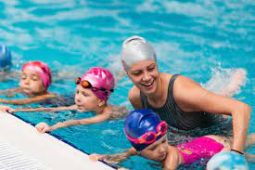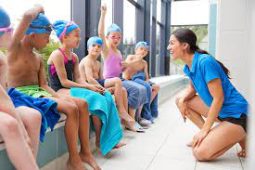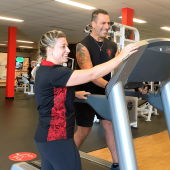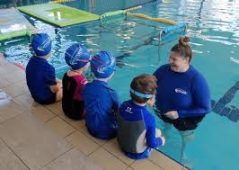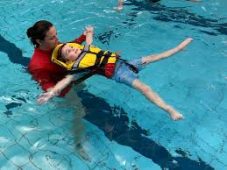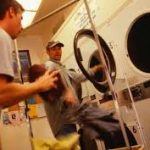A2Bookmarks Australia Social Bookmarking Website
Welcome to A2Bookmarks Australia, your premier destination for effortless social bookmarking down under. Our platform is designed to help Australians easily save, manage, and share their favorite web pages and URLs. Whether you’re a business owner looking to enhance your online visibility across Australia or an individual wanting to organize your go-to websites, A2Bookmarks Australia provides a streamlined and user-friendly solution. Connect with our Australian community, utilize powerful bookmarking tools, and boost your digital presence with confidence. Dive in today and transform the way you bookmark and share online content!

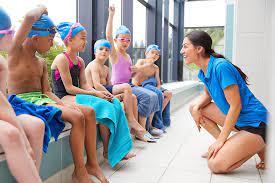
What is a Level 1 swim teacher in Australia? medium.com
Becoming a Level 1 swim teacher in Australia is one of the most rewarding first steps into aquatics education. It’s where a passion for the water meets the science of teaching—and no, it’s not just about yelling “kick, kick, kick” poolside. Let’s dive in (gently) to understand what the role entails, how to qualify, and why so many Aussies are making a splash in this career path.
What Is a Level 1 Swim Teacher in Australia?
A Level 1 swim teacher is someone trained and certified to deliver swimming lessons to beginner and early-stage learners. In Australia, this often includes toddlers, young children, and adults just getting comfortable in the water.
They’re responsible for:
-
Teaching foundational swim skills like floating, breath control, kicking and basic strokes.
-
Creating a safe and encouraging environment.
-
Following national teaching standards, usually set by organisations like Swim Australia or AUSTSWIM.
-
Recognising when students are ready to progress to more advanced instruction.
The Level 1 certification focuses on entry-level instruction—think of it as your “L plates” in swim teaching. It’s ideal for those starting a career in aquatics, whether casually or as a serious step toward long-term teaching or coaching.
What Qualifications Do You Need to Become One?
You’ll need to complete an accredited swim teacher training course. While several bodies offer certification, the most recognised in Australia are:
-
AUSTSWIM Teacher of Swimming and Water Safety
-
Swim Australia Teacher (SAT)
-
Royal Life Saving Society (RLSSA) Swim Teacher Certificate
These programs have some common requirements:
-
Minimum age: 16 years old
-
Current CPR certification
-
Working with Children Check (varies by state)
-
Completion of theory modules, supervised practical hours, and assessment
Once qualified, your accreditation is nationally recognised—so you can teach anywhere in Australia.
What Will You Learn in the Training?
It’s not all sunscreen and pool noodles. The course is grounded in behavioural principles and child development knowledge.
You’ll be trained in:
-
Water safety skills and rescue techniques
-
Lesson planning and progression structures
-
Effective communication with children and parents
-
Understanding different learning styles and behavioural patterns
-
Using equipment (like kickboards and noodles) to aid learning
-
Risk management and emergency responses
This focus on progressive skill-building plays into the principle of Commitment and Consistency. When students see small, achievable wins, they’re more likely to keep returning—a win for both safety outcomes and business sustainability.
How Long Does It Take to Get Certified?
Most courses can be completed within 4–8 weeks, depending on availability and your schedule. Here’s what the general process looks like:
-
Enrol in a course (online theory modules + practical workshop)
-
Attend an in-person workshop (usually 1–2 days)
-
Complete supervised teaching hours (at a swim school or approved facility)
-
Get assessed by a qualified trainer
Many providers allow flexible start times, so you can work around study, work or family commitments.
What’s the Job Like?
Level 1 swim teachers often describe their work as equal parts rewarding, energising, and surprisingly emotional.
Expect:
-
Early starts (especially on weekends)
-
Lots of interaction with parents
-
A bit of singing (“Humpty Dumpty” is a crowd favourite in toddler classes)
-
The occasional splash to the face—comes with the territory
Anyone who’s helped a terrified child learn to float for the first time will tell you: it’s magic. You’re not just teaching swimming—you’re building water confidence, one kid at a time.
There’s also strong demand. According to Swim Coaches & Teachers Australia, there’s an ongoing shortage of qualified teachers across the country. So, job opportunities are steady, especially in suburban and regional areas.
Is It a Good Career Move?
If you enjoy working with kids, love the water, and want a flexible role, swim teaching is a fantastic option.
Some common paths after Level 1 include:
-
Moving into Level 2 or competitive stroke development
-
Becoming a coach or aquatic program coordinator
-
Diversifying into areas like disability swimming, adult beginners, or school programs
Plus, you’re entering a role with a deeply embedded social proof advantage: Aussie parents talk. A lot. Word-of-mouth and referrals drive enrolments, and your reputation becomes a key currency.
How Much Do Level 1 Swim Teachers Earn?
Rates vary based on location, qualification, and experience, but here’s a ballpark:
| State | Average Hourly Rate |
|---|---|
| NSW | $30–$40 |
| VIC | $32–$42 |
| QLD | $28–$38 |
| WA | $30–$40 |
| Regional Areas | Often slightly higher due to demand |
Those who stick with the industry often move into supervisory roles or add extra credentials to increase earning potential.
How Is Swim Teaching Different From Coaching?
Great question—because the lines can blur.
Swim teaching focuses on:
-
Building fundamental water skills
-
Safety and confidence
-
Technique at the beginner level
Coaching, especially at Level 2 and beyond, is about:
-
Technique refinement
-
Training for speed, endurance and performance
-
Competitive development and squad management
Both roles require strong communication and patience, but coaching typically requires more experience and higher-level qualifications.
Who Makes a Great Swim Teacher?
Not everyone’s cut out for the job, but those who succeed often share these traits:
-
A genuine love for kids (and water!)
-
Strong observation skills
-
Patience in spades
-
Energetic and physically fit
-
Willing to learn continuously
In behavioural terms, the best swim teachers use positive reinforcement and understand how to create the right choice architecture for kids to succeed.
A good lesson feels like fun—but it’s actually cleverly structured.
Is There a Shortage of Swim Teachers in Australia?
Yes—and it’s not just a post-COVID hangover.
Many swim schools report waiting lists because they simply can’t find enough qualified staff. That creates two effects:
-
Scarcity: Opportunities open up more quickly for new teachers.
-
Urgency: Parents are willing to pay a premium or travel further for trusted instructors.
If you’re looking for meaningful part-time work or a flexible job that fits around uni or parenting, swim teaching can be a smart move.
FAQ
Q: Can I do the course while I’m still in high school?
Yes, you can start most programs at 16. Some schools even partner with swim centres for VET programs.
Q: Do I need to be a strong swimmer?
You need to be comfortable in the water and demonstrate basic skills, but you don’t need to be Olympic material.
Q: Can I work at a public pool or private centre with Level 1?
Absolutely. Many Level 1 teachers work at local leisure centres, swim schools, or even mobile programs in backyards.
Final Thoughts
Teaching someone to swim is more than just a job—it’s a lifelong skill that could one day save a life. The ripple effect (pun intended) of helping one child overcome their fear of water can stretch far beyond the pool deck.
For those ready to take the plunge, this swim instructor course outlines the full path to certification and career growth in Australia.
And if you’d like a deeper dive into the broader water safety landscape, check out the Royal Life Saving National Drowning Report, which highlights why swim teaching is such a vital profession today.


